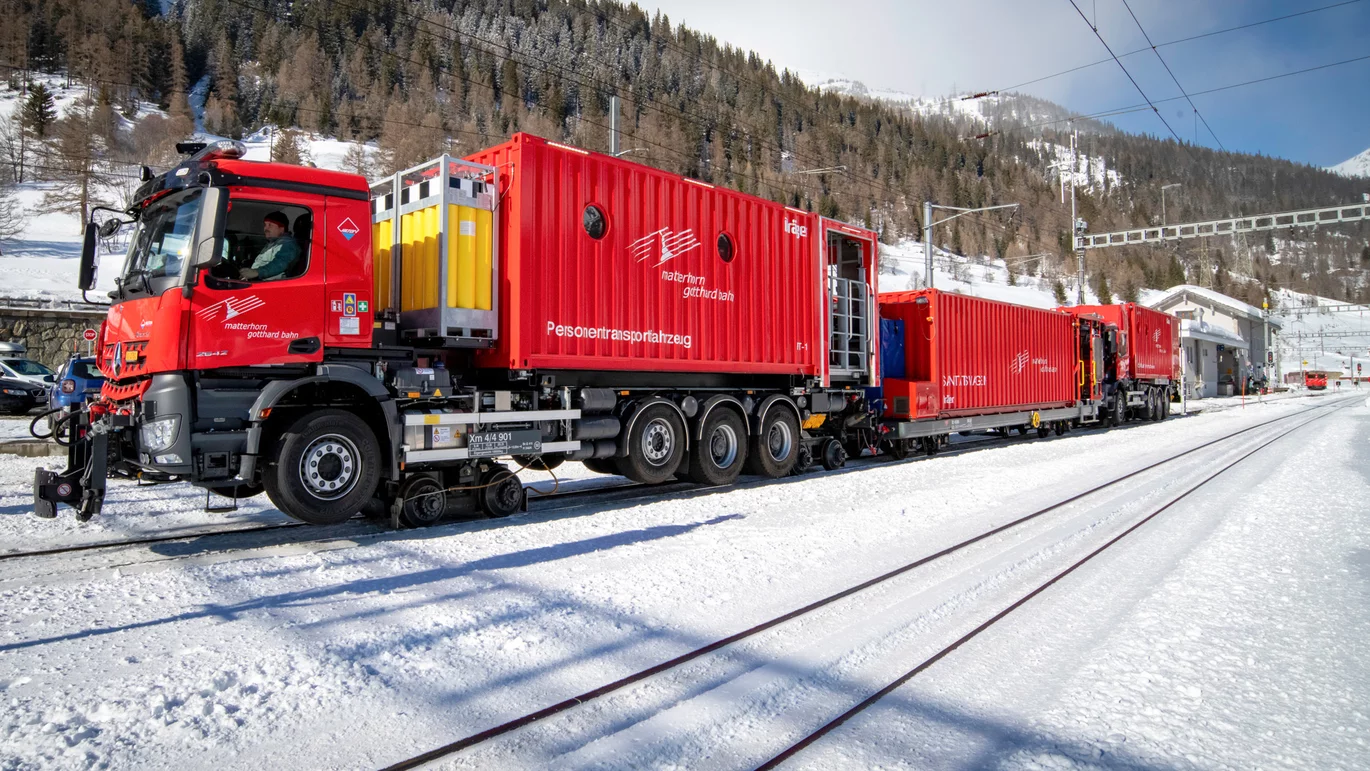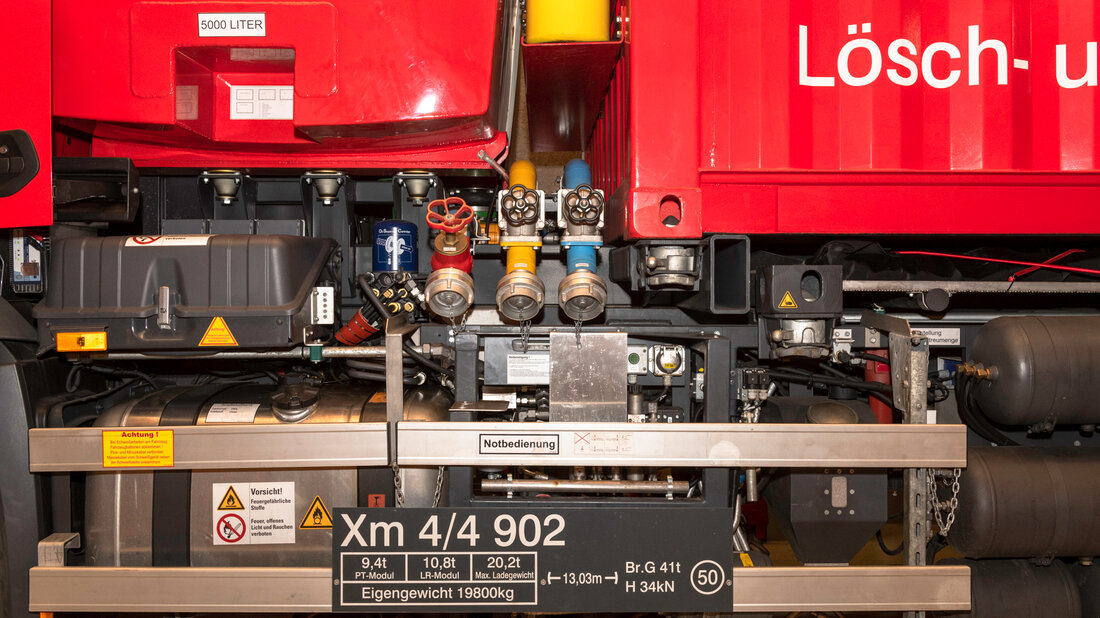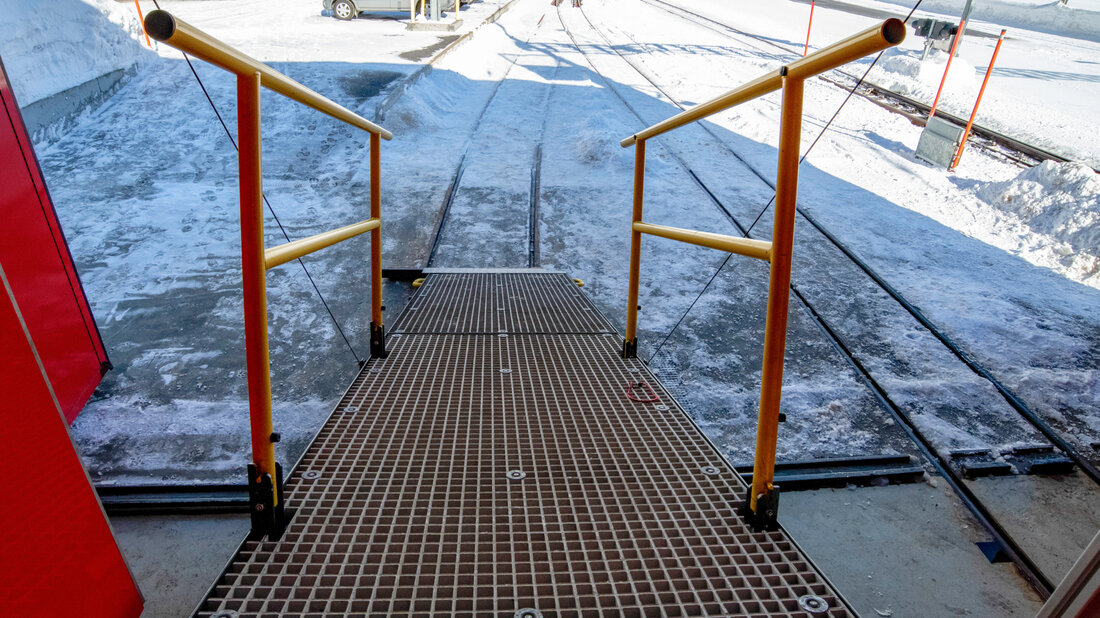At the beginning of 2019, the Matterhorn Gotthard Railway put two new fire and rescue trains into operation, each consisting of a combination of road-rail vehicles and rail-only vehicles. We visited Christian Imsand, the head of the Furka Base Tunnel Rescue Service, and Roland Guntern, the operations manager of the operational fire service, in Oberwald to learn more from them about this rescue apparatus, which is unique in some respects.
The Furka Base Tunnel
The 15.4 km long Furka Base Tunnel connects the towns of Oberwald in the canton of Valais and Realp in the canton of Uri. With its opening, it became possible to operate the railway line of today's Matterhorn Gotthard Railway between Disentis and Zermatt all year round. The prior route over the Furka mountain, which runs through the Furka Summit Tunnel, is closed in winter due to the large masses of snow. There are car loading stations on both sides of the Furka Base Tunnel, thanks to which the tunnel is also available to car drivers. Additionally, the route is being used by the famous Glacier Express.
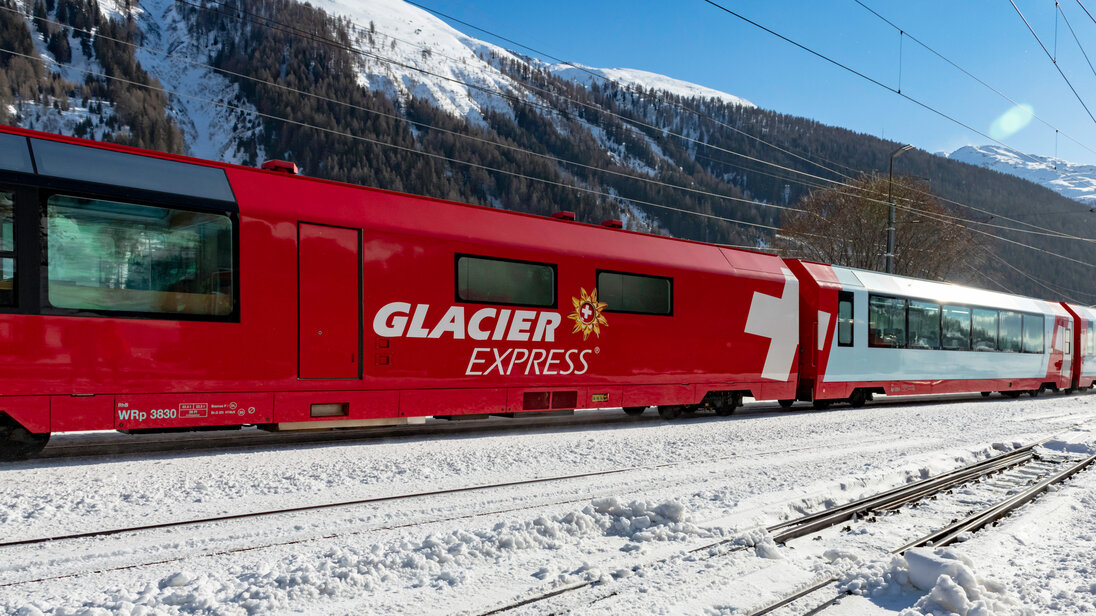
The Fire and Rescue Train
The Furka Base Tunnel Rescue Service has stationed one fire and rescue train (FRT) at each of the tunnel portals in Realp and Oberwald. Each train consists of three units:
– fire and rescue vehicle
– medical vehicle
– person transport vehicle
The fire and rescue vehicle and the person transport vehicle are road-rail vehicles. They can drive themselves on roads as well as on rails. The medical vehicle has no drive of its own; it is pulled or pushed by the road-rail vehicles. The picture below shows the usual arrangement of the three units when they are deployed.
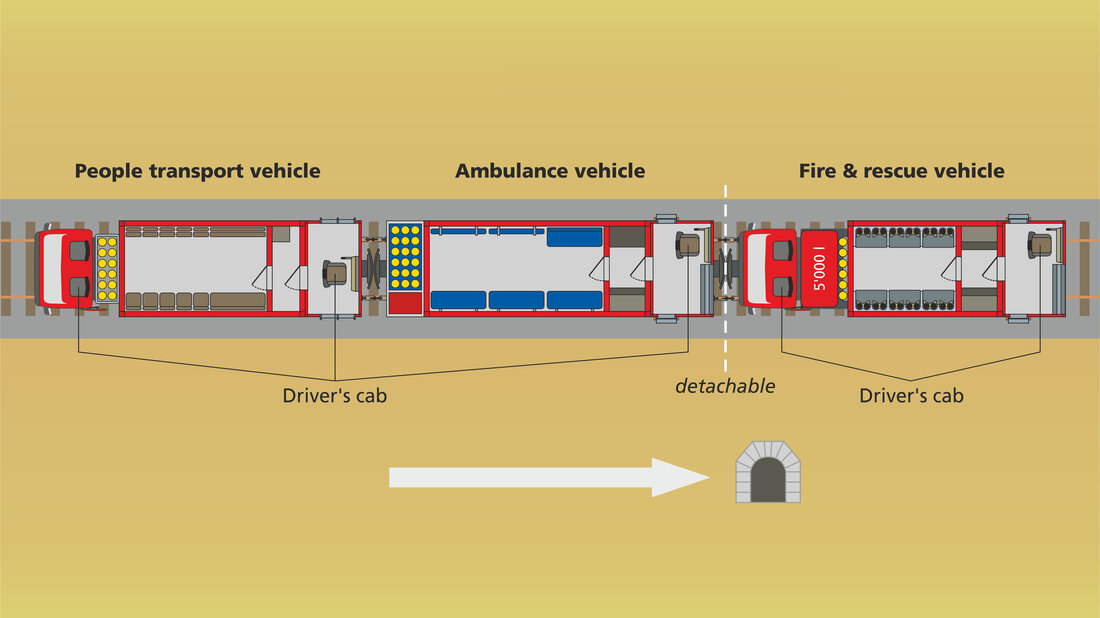
The two road-rail vehicles each have two driver's cabs and can therefore be controlled from both the front and the rear. This is important because rail vehicles are not allowed to reverse unaccompanied. The driver must always have a direct view of the track in front of him. Therefore, there is also another driver's console at the rear of the medical vehicle. From here, a combination of the person transport vehicle and the medical vehicle can be controlled when the fire and rescue vehicle is uncoupled in order to be deployed detached from the overall composition.
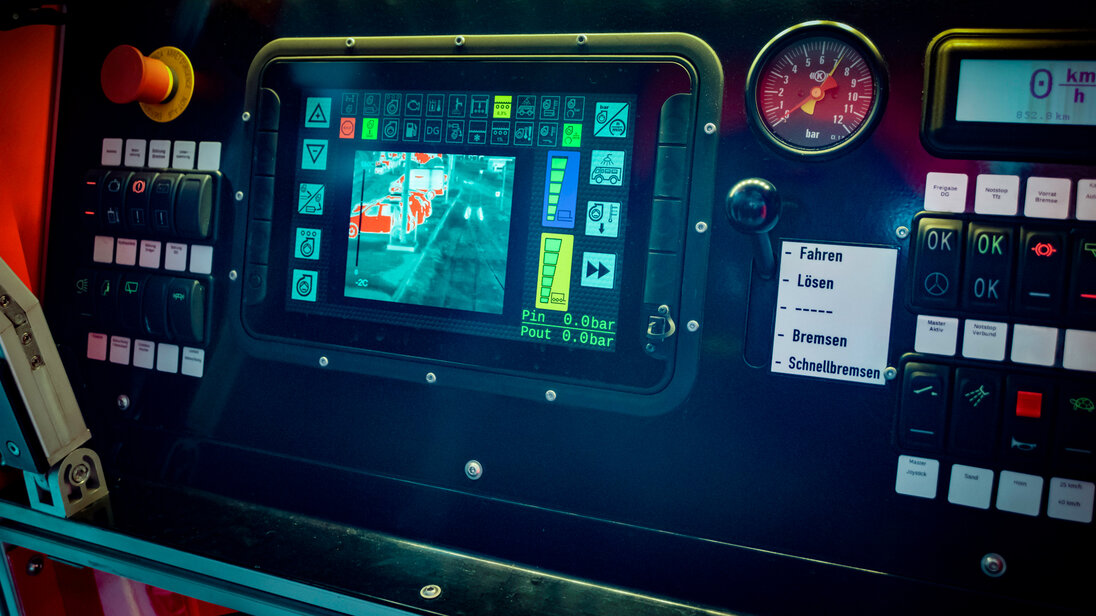
The firefighting and rescue vehicle
The fire and rescue vehicle is 12.5 m long and reaches a maximum speed of 40 km/h on the rail. It is equipped similar to a fire and rescue vehicle on the road, e.g. it carries breathing apparatus, hydraulic rescue equipment, standard firefighting equipment, and special tools for railway technical assistance.
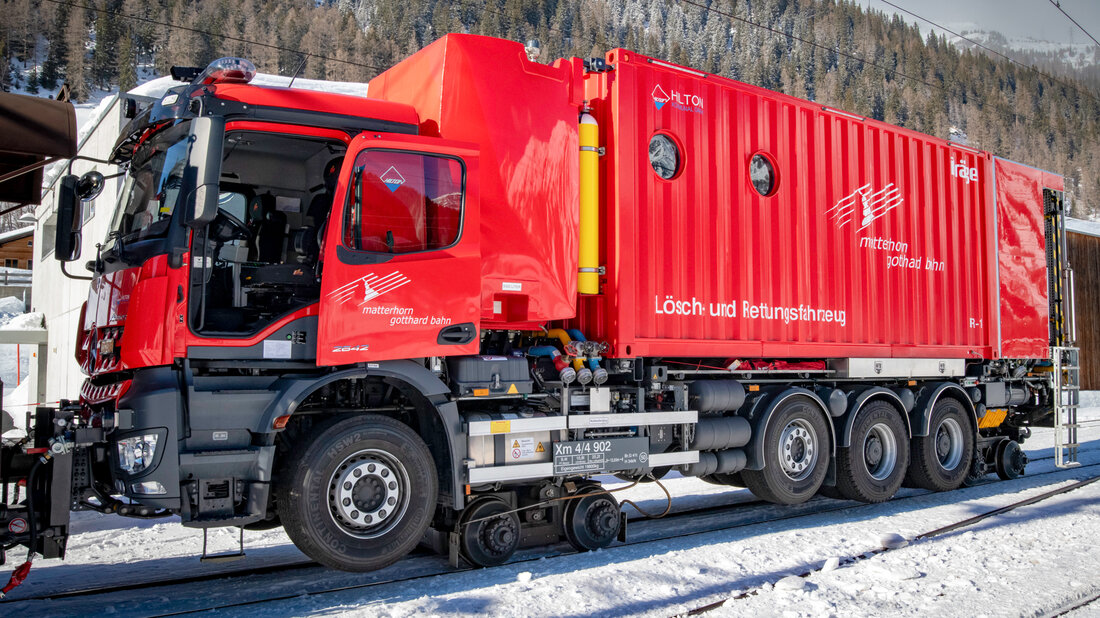
Seen from the rear, the vehicle is divided into three sections: The boarding area with the open driver's cab, where a permanently installed breathing mask is available for the driver. It is followed by the airlock, which leads to the crew cabin. The cabin is ventilated with positive pressure and serves as a secured room for the firefighters. Here the breathing apparatus are also located.
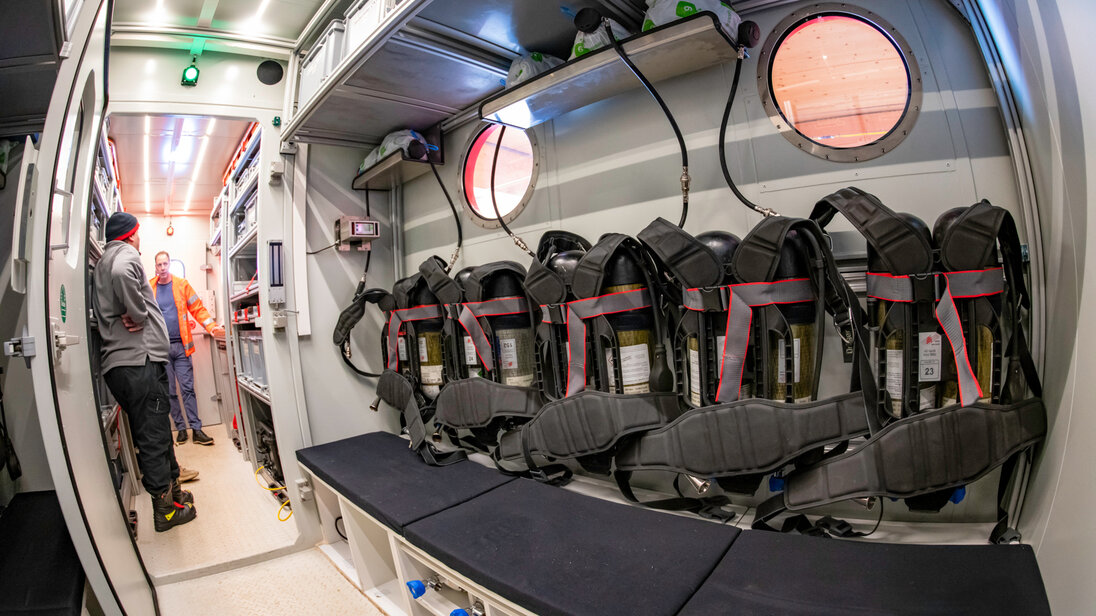
Extinguishing equipment and other devices are distributed throughout the vehicle. At the moment, the Furka Base Tunnel Rescue Service is still working on the best possible placement of all of the equipment, which is why it is continually being altered, as Christian Imsand explains.
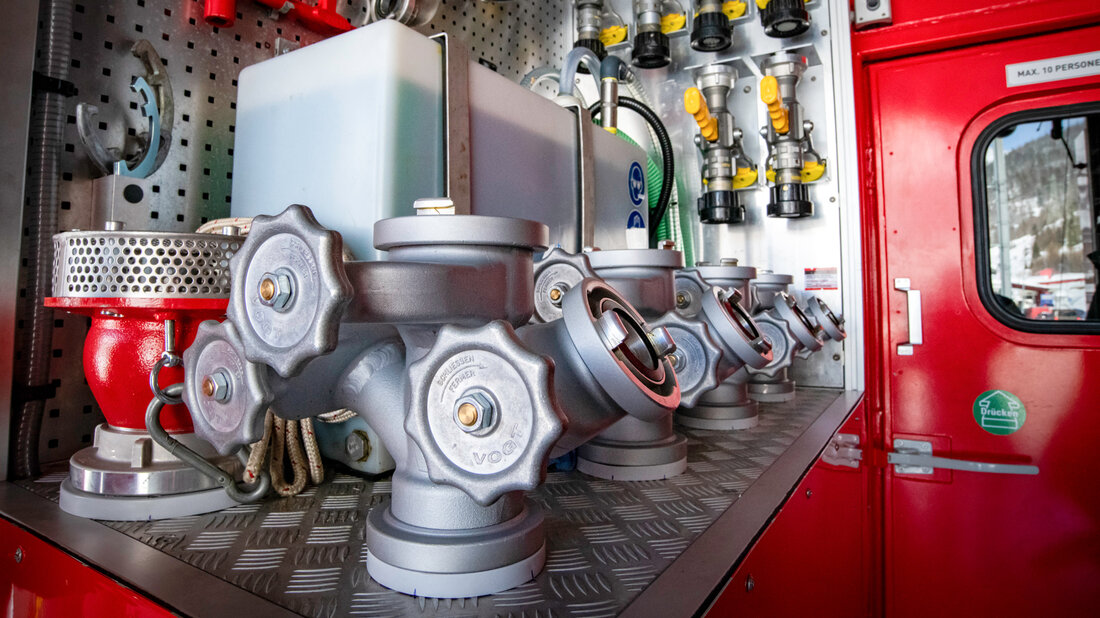
Built for the narrow tunnel
The FRT was optimally adapted to the sectionally very narrow tunnel of the Furka Base Tunnel. The cabs are equipped with sliding doors. Usual lorry doors could not be adequately opened because of the limited distance to the tunnel wall.
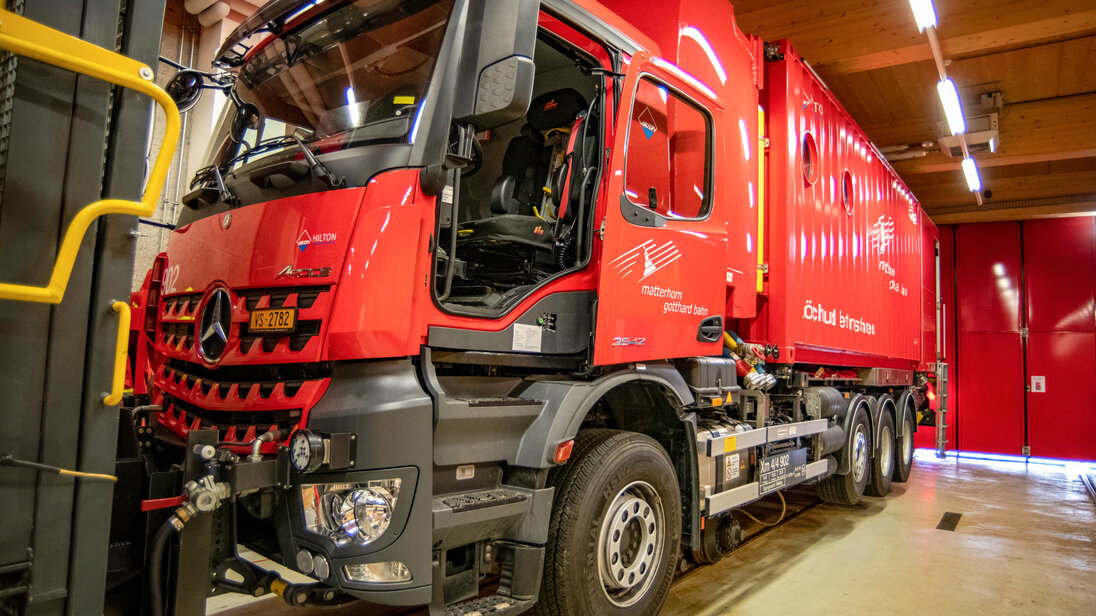
Because rail vehicles are high, getting in and out is an effort. Therefore, the fire and rescue vehicle was equipped with a hydraulically operated rear ramp that can be unfolded and lowered onto the rails. It offers comparatively comfortable access for firefighters as well as for persons to be rescued.
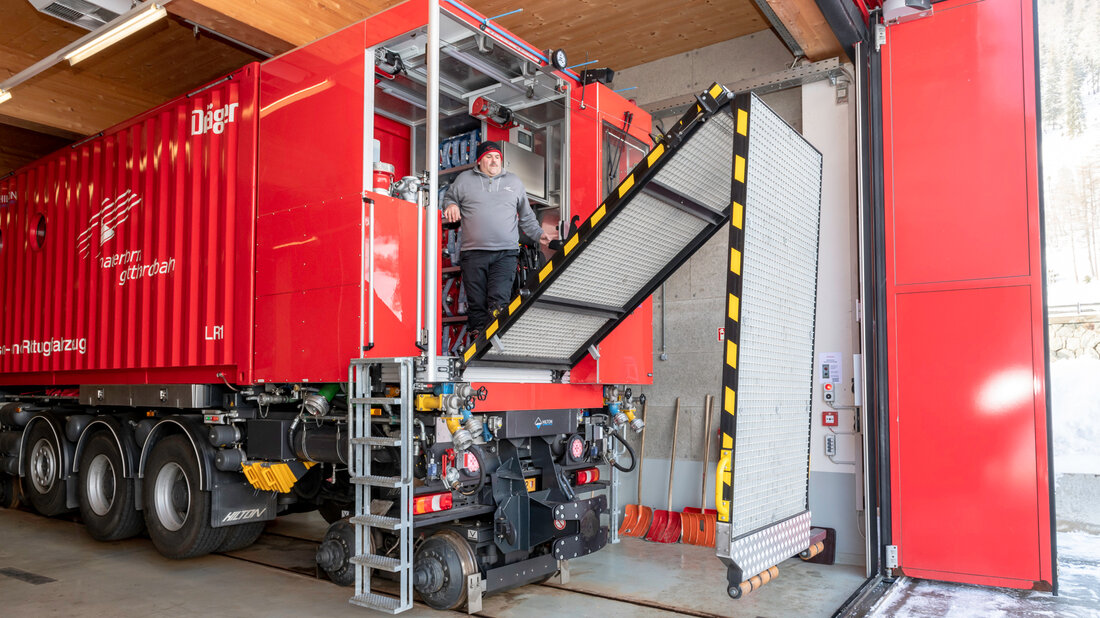
The medical vehicle
The 13.7 m long medical vehicle has no drive of its own; it is usually always coupled to the person transport vehicle when in use. The simple equipped inside is a secured space and can accommodate a maximum of 30 people. It is supplied with breathing air independently of the surrounding air. The air comes from a specially manufactured cylinder bundle with a pressure of 300 bar and a total capacity of 328 000 litres.
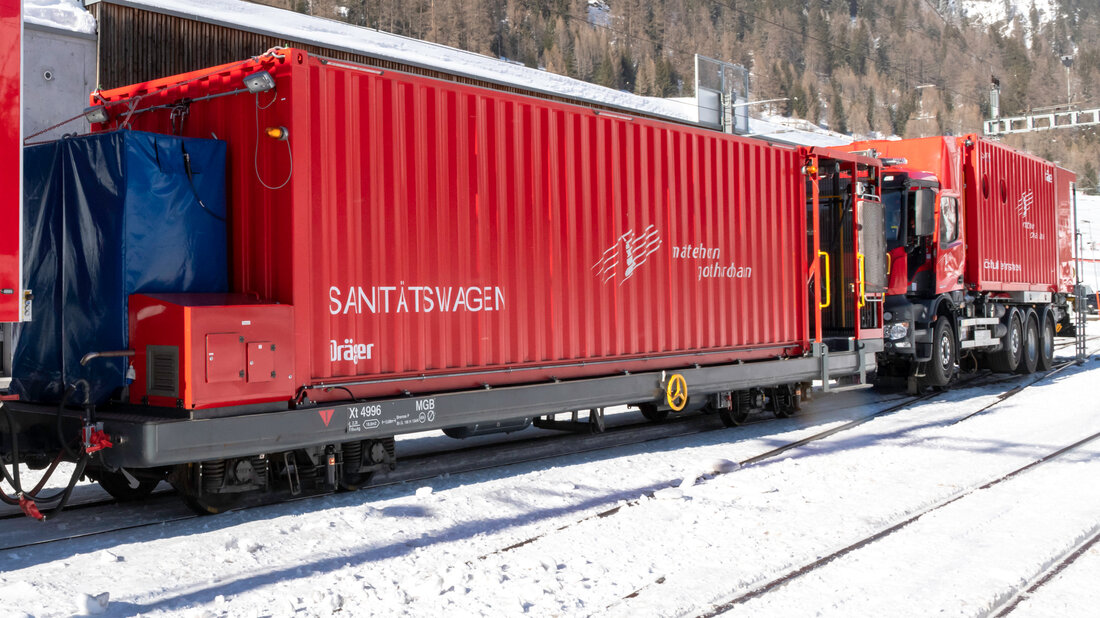
On one side of the medical vehicle, there is a ramp similar to the one on the fire and rescue vehicle. Next to this is the driver's control stand, equipped with a breathing mask for the driver. From the ramp, the persons to be rescued first enter an airlock and from there, they enter the person transport cabin. Another advantage of the ramps is that they can also be used for wheelchairs.
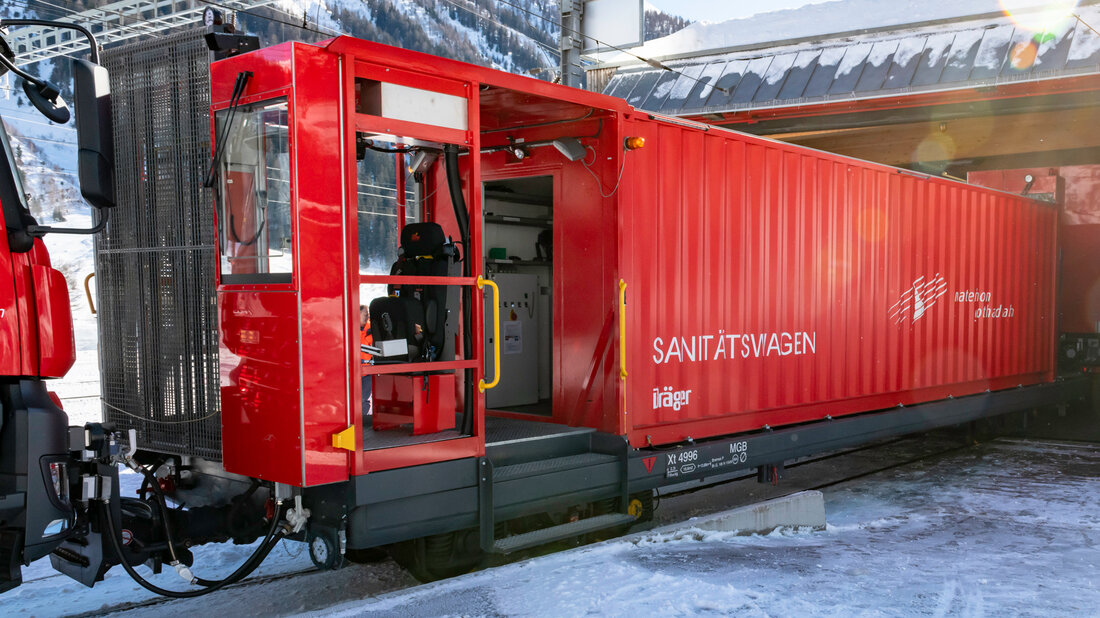
The person transport vehicle
The person transport vehicle is primarily used as a towing vehicle for the medical vehicle and pick up persons to be rescued. It is constructed similarly to the fire and rescue vehicle but does not have a ramp at the rear because the medical vehicle is usually coupled here.
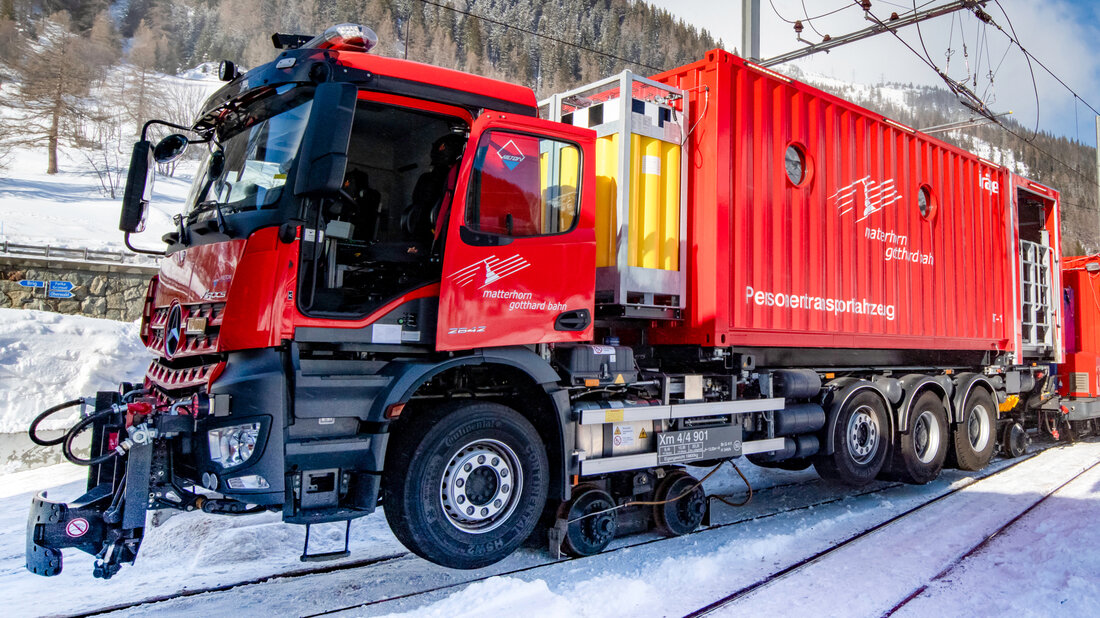
As with the medical vehicle, the cabin is ventilated with positive pressure and is supplied from a breathing air cylinder bundle installed between the driver's cab and the superstructure.
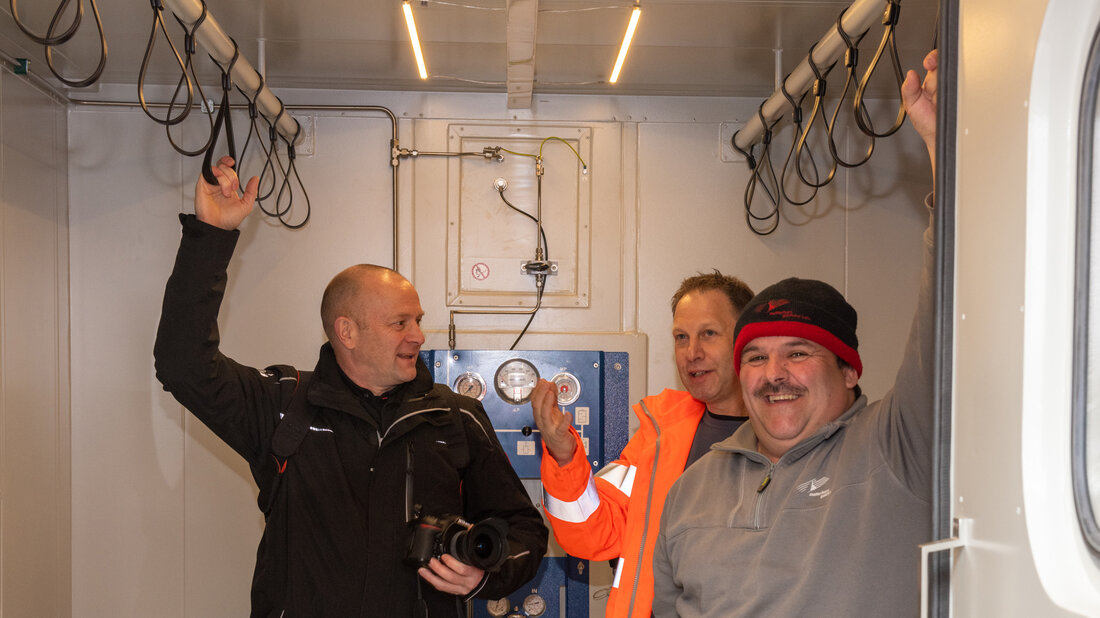
Road-rail solution brings cost advantages
As a road-rail vehicle, the FRT of the Matterhorn Gotthard Railway can also travel on the road. However, Christian Imsand explains that this option will rarely be used because it requires some modifications. For example, the buffers must be removed for operation on the road. The Matterhorn Gotthard Railway decided in favour of the road-rail version primarily for cost reasons: «A normal locomotive would have been much more expensive - and then we would only have the locomotive first». On the other hand, with the road-rail version, all the essential requirements of the rescue service could be met much more cost-effectively.
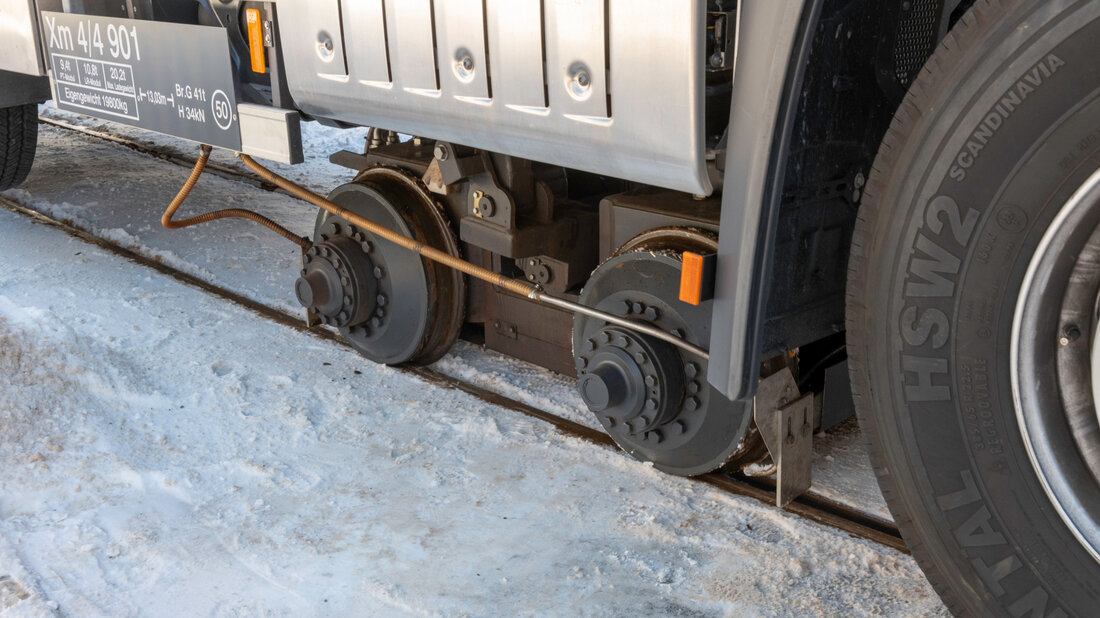
From a voluntary system to full-time service
The Furka Base Tunnel Rescue Service has not only repositioned itself technically. It has also been fundamentally reorganised in recent months. The voluntary system has been and is still being converted to full-time staff «in order to meet our response times and to ensure that qualified personnel are always available for the first response,» says Christian Imsand.
In a follow-up article, we will report on the required intervention and deployment concept.


